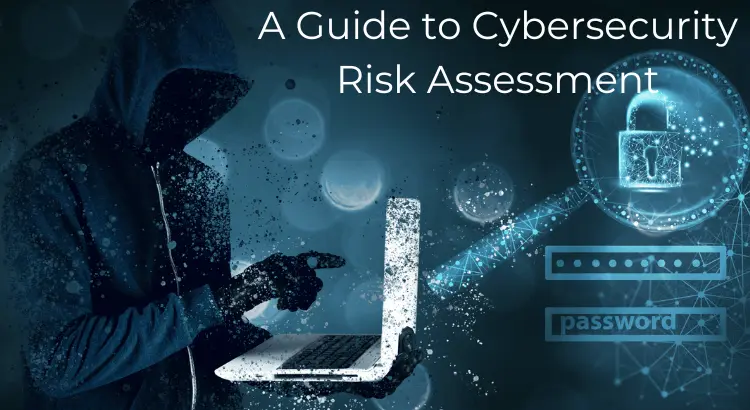Today’s continuously shifting digital landscape has elevated cybersecurity to a top priority for businesses of all scales. With cyber threats becoming increasingly sophisticated, adopting a proactive stance in safeguarding sensitive data and ensuring uninterrupted operations is imperative.
A highly effective strategy for enhancing an organization’s cybersecurity posture involves conducting regular risk assessments through managed cybersecurity services. This article will explore the cybersecurity risk assessment process, outlining the key steps and best practices to safeguard your digital assets.
Understanding the Importance of Cybersecurity Risk Assessment

A cybersecurity risk assessment is a meticulously structured process designed to aid organizations in identifying vulnerabilities, assessing potential threats, and quantifying the possible repercussions of security breaches.
With the adoption of managed services, businesses can tap into specialized expertise and additional resources, streamlining the process and enabling them to conduct a thorough risk assessment with precision and confidence. This collaborative approach enhances the assessment’s efficiency and ensures a holistic evaluation of the organization’s cybersecurity landscape.
Step 1: Define Your Scope
The first crucial step in any cybersecurity risk assessment is defining its scope. This entails identifying assets, data, and systems that require safeguarding. Managed services providers can assist in this process by helping organizations pinpoint their most critical assets, thereby narrowing the focus of the assessment.
Step 2: Identify Threats and Vulnerabilities
Managed services experts are well-equipped to identify potential threats and vulnerabilities within your organization’s digital infrastructure. They employ various tools and techniques to detect weaknesses in your systems, applications, and networks. This phase involves scanning for known vulnerabilities and assessing potential risks associated with emerging threats.
Step 3: Evaluate Risks
After identifying vulnerabilities and threats, a comprehensive evaluation of the associated risks becomes imperative. Services providers employ rigorous risk assessment methodologies that consider the likelihood of an attack occurring, the potential impact on the organization, and the broader implications for data integrity and client trust. This comprehensive analysis enables organizations to prioritize security measures effectively based on each vulnerability’s precise level of risk, ensuring a robust cybersecurity framework.
Step 4: Develop a Risk Mitigation Strategy
Services experts collaborate closely with your organization to develop a comprehensive risk mitigation strategy. This tailored strategy is a roadmap for implementing specific actions and security measures to address identified vulnerabilities and minimize associated risks.
This strategy includes essential measures such as robust firewalls, advanced intrusion detection systems, and encryption protocols. This multifaceted approach ensures a holistic defense against potential cyber threats, bolstering your organization’s cybersecurity resilience.
Step 5: Implement Security Controls
After developing the risk mitigation strategy, the next critical phase is implementing the requisite security controls. Leveraging the expertise of professionals, organizations can efficiently configure and deploy these controls to fortify their cybersecurity infrastructure.
However, it’s important to emphasize that regular monitoring and diligent maintenance are paramount to guaranteeing the sustained efficacy of these security measures and safeguarding your digital assets effectively over time. This ongoing commitment ensures that your organization remains resilient against evolving cyber threats.

Step 6: Monitor and Assess Continuously
Effective cybersecurity is an ongoing and dynamic process. Service providers offer uninterrupted monitoring and ongoing assessment to promptly identify emerging threats and vulnerabilities as they surface. This vigilance ensures that your organization stays ahead of evolving cyber risks.
Regularly scheduled reviews and updates to security controls are vital components of maintaining a robust cybersecurity posture, providing the agility to adapt to ever-changing threats in the digital landscape.
Step 7: Incident Response Planning
No matter how robust your cybersecurity measures are, a well-defined incident response plan is essential. Professionals can help organizations develop and implement a comprehensive incident response strategy, ensuring that the organization is prepared to respond swiftly and effectively during a security breach.
This approach minimizes the potential impact of security incidents and instills stakeholder confidence, demonstrating your commitment to data protection and resilience in the face of cyber threats. Additionally, a well-crafted incident response plan can streamline communication within your organization, helping teams coordinate their efforts seamlessly to mitigate risks and minimize downtime.
Conclusion
Conducting a risk assessment with managed cybersecurity services is a prudent and effective approach to safeguarding your organization’s digital assets. By following the steps outlined in this article, businesses can identify vulnerabilities, evaluate threats, and develop a robust risk mitigation strategy.
With continuous monitoring and proactive incident response planning, organizations can stay ahead of evolving cyber threats and maintain a strong cybersecurity posture. In an era where cyberattacks are an ever-present threat, leveraging these professional services for cybersecurity risk assessment is a strategic investment in the security and resilience of your organization’s digital infrastructure.